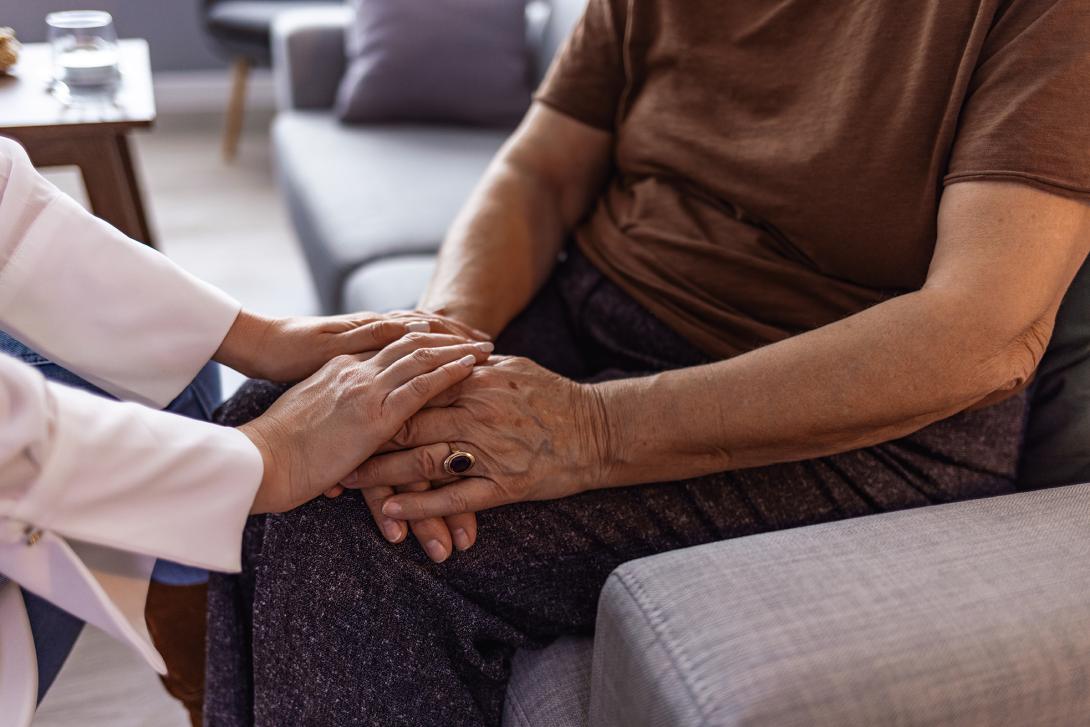
The hospital of the future is in the home
Assistència Sanitària and ASISA have many programmes for caring for chronic patients in their homes, through monitoring their constants on line and scheduled visits by the healthcare professionals.
For many years Asisa and Assistència Sanitària have been working to improve the health conditions of the elderly with initiatives for prevention, accompaniment and healthcare. One of them is the Care Programme for Pluripathological Patients by Assistència Sanitària (PAPPA in its Spanish initials) that has now been in operation for a decade. Nadia Stasi is the current coordinator and she recalls the very beginnings, in June, 2011, when it was created “to tackle the needs of pluripathological chronic patients at home thanks to the vision and professional excellence of Dr. A. Viá, who was the coordinator until September, 2020, along with Assistència Sanitària, to bring together in the same programme early detection of clinical imbalance, treatment of flare-ups and end of life.”
The PAPPA, attended to by geriatrists, internist doctors and GPs along with nurses, “responds to the healthcare problem meant by patient care for those with chronic pathologies and multiple hospital admissions and suitable resources for the patients’ requirements,” Stasi adds. Additionally, “it rationalises the care of chronic patients, it offers care continuity and it improves the clinical efficiency and effectiveness, therefore we still are greatly motivated to continue with it.”
The programme resolves the needs of imbalanced chronic patients: EPOC, heart disease, diabetes, cirrhosis, acute processes of the infectious type such as pneumonias, infections of the urine tract or endocarditis. It also “attends the end of life of those who have suspended the healing treatment of the main pathology, dressing of complicated wounds, prolonged intravenous treatments, transfusions just to quote some examples of the home interventions,” the coordinator recalls.
In the first hours, a geriatrist and a nurse visit the patient at home; they make an assessment and talk to the family to mark out the guidelines for the care. “An evolutional multi-dimensional and interdisciplinary diagnosis process is carried out for each patient, designed to identify and quantify the problems and their capacity in the medical or clinical, functional, mental and social areas. The purpose is to develop an individualised plan of comprehensive care, which allows a preventive, therapeutic, rehabilitating and monitoring action, with the optimum use of the resources in order to achieve the best degree of quality of life.”
In the PAPPA, the patient is treated holistically in an inter- and multi-disciplinary setting. “The programme has a switchboard attended by nurses and multidisciplinary, proactive home visits by doctors and nurses, who offer healthcare education for the patient and their carer,” Stasi explains. “Home analyses, complementary examinations and programmed hospital admissions are also all made easier.” And the professionals can access the clinical notes and the medical orders from the patient’s home.
An app for monitoring
The technological advances have favoured projects to treat chronic patients in their homes. At ASISA they affirm that “The hospital of the future is in the patient’s home” and they consider that tele-medicine goes way beyond video consultations or mobile telephone applications, which “are a very useful complement to in-person consultations, which must continue to be the main event in the doctor-patient relationship.” ASISA has started up the Alert Programme, to control patients with chronic illnesses. Thanks to this initiative they prevent and detect the flare-ups early on of patients who suffer from chronic ailments by way of a digital on line application.
The Alert Programme, launched in 2019, has a digital application that collects clinical data from the patient, such as blood pressure, oxygen saturation or weight and automatically sends them to a monitoring platform. The patient also fills in a questionnaire about their symptoms through the same app. With all the data in their hands, the people in charge of the programme can detect the flare-ups and activate the necessary resources in each case.
Another programme by ASISA monitors insured members with Covid-19 in home isolation, of which 160,000 patients have already benefitted.
Better at home
Nadia Stasi considers that “treatment at home offers many benefits compared to traditional hospital admission. Patients make quicker recoveries, the nosocomial infections decrease and the confusion symptoms that accompany traditional hospital admissions are avoided or reduced.” Additionally “home hospitalisation encourages the implication of the patient in the care process and reduces the healthcare expenses derived from the admission and the risk of mistakes in the medication.” Such is the case that Doctor Carlos Zarco, Medical Director of the Hospital Universitario HLA Moncloa (Madrid), affirms that homes “will become digitalised hospitals, with intelligent infrastructures.”
Technology and medicine, great allies
After some years in operation, the Alert Programme has allowed professionals to be more efficient. Additionally, the patients treated, who have valued the service positively, have shown a highly significant drop in the number of emergencies and hospital stays associated with their chronic pathologies. ASISA has other, more usual tele-medicine solutions such as the Asisa LIVE platform, which includes a video consultation system that attends over 20 specialities and a Psycho-emotional Support Service. They also have ‘Doctor Chat’, an application for mobile devices that allows access 24 hours of the day to professionals in the most demanded specialities.
Dr. Nadia Stasi
Dr. Nadia Stasi is coordinator of the Care Programme for Pluripathological Patients by Assistència Sanitària (PAPPA).




